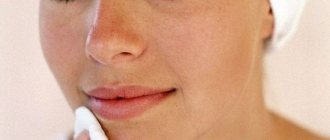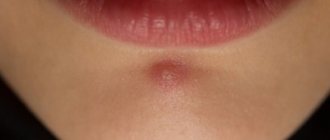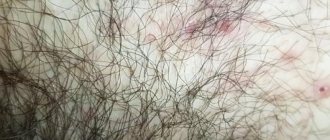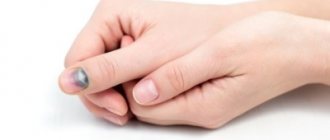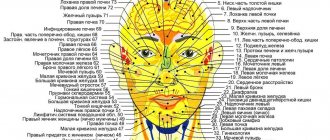Pimples on the head in the hair of an adult should not be ignored. A rash on any part of the skin in 80% of cases indicates a malfunction in the body. It is sometimes quite difficult to treat the phenomenon, so it is worth contacting a dermatologist at the first signs and following complex therapy. It is necessary to take timely measures to eliminate the disease so that serious complications do not arise. Modern medicine offers a wide selection of drugs and scalp care products aimed at eliminating acne.
Types of acne
Everyone is familiar with formations called pimples. Almost 100% of teenagers experience an anxious and uncomfortable period when acne appears on the face or other part of the body. If during adolescence this is considered a variant of the norm, then an adult should be concerned that acne has begun to form on the head. They are often localized in the part where the hair is located.
The stage of inflammatory acne has certain symptoms, when it becomes difficult for a person to take care of his hair, the formations itch, and slight pain appears. During this period, people notice changes on the scalp and begin to look for the causes of the phenomenon.
Acne can be varied in appearance and cause different symptoms to the patient. In medicine, it is customary to divide the entire period of acne development into several stages, which are based on a variety of formations. There are several main types of acne:
- Comedones. They, as a rule, do not cause a person much discomfort and do not cause pain. They are formed as a result of blockage of skin pores due to excessive exposure to sebaceous glands or dirt. On the scalp where there are hairs, it is difficult to recognize them. There are external and internal (subcutaneous) comedones. The former can be recognized upon careful examination, the latter can only be palpated, as they do not reveal themselves by any external manifestations.
- Acne accompanied by an inflammatory process. This is the second stage of development, when comedones become inflamed and turn into acne with characteristic manifestations of the disease. The patient develops red bumps on his head with a central white part that constantly itch.
Interesting fact! Comedones on the scalp may not always progress to the acne stage. This requires exposure to certain external or internal factors, for example, a malfunction in the immune system, a cold, hormonal disorders, or simple lack of personal hygiene.
- Purulent acne. You should not be lenient about the manifestation of inflammatory bumps, since if measures are not taken in a timely manner, they can develop into purulent formations. The reason for the appearance of such pimples is only by ignoring therapy that could prevent the appearance of an abscess. Initially, a white head appears on the red lump in the center; over time, it fills the entire space and, as a result, a large purulent spot with a bulging surface forms on the skin.
- Wen are formations that are not always considered in medicine to be a manifestation of acne. They are similar to comedones, but unlike them they sit deep under the scalp, and not just in part of it, as with acne. Wen also needs to be treated in a timely manner so that it does not contribute to the development of the inflammatory process throughout the head.
- Acne of viral origin. From the name of this species it is clear that such a rash can appear as a result of a viral infection. This type of acne is always accompanied by additional symptoms. A person develops general weakness and ailments. Slight increase in temperature, etc.
The most dangerous type is considered to be a purulent pimple. With prolonged development, it can lead to a widespread purulent inflammatory process, which is very risky for the head area.
It is also worth distinguishing between the concepts of “pimples”, “blackheads” and “acne”. Despite the fact that many experts use these terms as synonyms, there is a significant difference between them, primarily in symptoms. Pimples are more reminiscent of acne, since both formations contribute to the appearance of an abscess and the independent opening of an abscess. But acne always leaves a slight scar on the skin. Moreover, in 90% of cases this type of pathology does not appear as a single pimple, but instead presents as a rash on the skin, when a single pimple may appear. Acne is a skin rash that has a milder form. These are black dots on the surface of the skin; they practically do not penetrate into its depths and do not pose a great danger. Often occur during hormonal imbalance and adolescence.
In medicine, these 3 concepts are considered synonymous not based on their external sign, but for reasons of manifestation and general etiology. All of the listed pathologies are formations on the skin that are inflammatory in nature.
Which doctor should I contact?
When rashes on the scalp appear systematically and cause pain and discomfort, you should visit a professional dermatologist. After conducting the necessary laboratory tests, establishing the cause of the rash, inflammation on the head, the dermatologist prescribes treatment himself or advises seeking advice from an allergist, endocrinologist, therapist, or neurologist. Getting rid of the main cause of acne will speed up the results of properly prescribed treatment.
Why do acne appear on the scalp?
Acne can appear for completely different reasons, which will be in the nature of an external or internal factor. The disease can occur in any person, regardless of gender and age.
Dermatologists today identify several reasons leading to the development of acne on the head:
- Overactivity of the sebaceous glands. When they function excessively, a person’s scalp pores become clogged. Particularly susceptible areas are those where there is hair. Hair grows from a follicle, which can become inflamed due to overactive glands.
- Hormonal disbalance. Here it is worth distinguishing between endocrine disorders in women and men. Since in the first, acne on the head may appear as a result of menstrual irregularities during pregnancy. In the second, there is a sharp decline in testosterone levels.
- Violation of personal hygiene. According to the advice of cosmetologists and dermatologists, it is recommended to wash your hair at least once a week, unless a person experiences daily physical activity that leads to increased sweating. If you have a job that requires physical activity, you should keep your hair clean 3 times a week.
- Improper scalp care. The rule that hair must be washed every day or every other day is considered incorrect. This disrupts the natural production of sebaceous glands, which are designed to protect the head from dryness. Since the natural fat layer is removed, the glands begin to work harder, which leads to their hyperactivity.
- Wrong selection of shampoo. Even this factor can cause the development of acne on the head. If the hair washing product is chosen incorrectly, it can cause irritation of the skin, lead to dryness or, on the contrary, excessive oily deposits. You need to know your hair type to make the right choice of shampoo.
Dermatologists always recommend eliminating external possible causes of the disease first. You can try changing your shampoo, changing your hat, watching your diet, giving up bad habits. If acne does not go away, the cause of its appearance may be disturbances in the functioning of the body.
- Skin microtraumas often cause acne to appear. It is possible to injure the scalp even with a comb or by constantly scratching the skin with nails. This phenomenon is not uncommon when dandruff appears. It begins to cause severe itching and as a result of constant microtrauma, acne appears.
- Bad habits such as consuming nicotine and alcohol can lead to acne on the scalp.
- Constant stress and overexertion affect the well-being of the entire body, including the condition of the hair and scalp.
- The reason that a rash appears may be wearing a tight headdress. It creates minor mechanical friction, which leads to skin irritation.
- Acne is sometimes the body's reaction to an allergenic product eaten or a hat that was washed with low-quality powder. Due to allergies, a rash appears on the skin. With prolonged treatment, it can develop into pustular formations.
- Taking steroids.
- Colds and hypothermia affect the condition of the skin.
- When a person consumes excessive amounts of sweets, he may develop acne. Fast-burning carbohydrates often lead to dysfunction of the skin.
- Disturbance in the functioning of the adrenal glands.
- It is worth paying attention to the bedding that a person uses. If it is made of synthetic material, this may well be the reason;
- A skin rash often occurs as a result of a malfunction of the intestines. Therefore, it is worth trying to carefully consider your diet. Perhaps there is a lot of junk food, which doubles the work of the organ.
- Seborrheic dermatitis of the scalp.
ethnoscience
By using traditional methods at home, you can achieve good results. However, this is possible when such prescriptions are part of complex therapy. In addition, a preliminary consultation with your doctor is mandatory. The following methods of combating acne are recognized as the most effective and popular:
- Apple vinegar. It must be taken in equal parts with water and mixed. The prepared mixture should be used to wet the scalp after washing your hair.
- Honey and cinnamon. Take 2 tablespoons of honey and mix with ground spice in a ratio of 2 to 1. The resulting mixture should be applied to the scalp and hair, wrapped in a warm towel for half an hour, and rinsed with warm water.
- Tea tree oil. It has good antiseptic properties. Thanks to this, it helps to get rid of acne under the hair. It is enough to add a small amount to shampoo.
- Sea salt. It is dissolved in water and a strong solution is prepared. A cotton swab is dipped into it and applied to the inflamed areas.
- Pumpkin. The vegetable is cut into pieces and crushed to a pulpy state. Apply as a mask to the head and leave for 15 minutes. Pumpkin helps accelerate the maturation of rash elements and dries out areas with inflammation.
- Hop. To use against acne, take hop cones and wash them, then boil them for 5 minutes. Leave the finished broth for 1 hour, filter, and then moisten the surface of the acne.
- Celandine. Take 3 tbsp. l. dry plant and pour 500 ml of boiling water. Strain after 2 hours and make lotions with a cotton swab. Freshly squeezed juice of the herb can be used to cauterize pustular formations.
Plantain has a good effect. To use it in the fight against rashes, you should tear off a few leaves of the plant and mash them. The pulp, together with the released juice, has an antibacterial effect. This mixture can be evenly distributed over the surface of the head and left for 20 minutes. You can wash off this mask with warm water.
Treatment
In the treatment of acne, you should not use drugs that fight pathologies on the facial skin. They will be ineffective, the person will waste his money. The most correct development option would be to contact a dermatologist who can prescribe effective therapy. You should not wait for a purulent pimple to appear; an adult, unlike a teenager, should not be embarrassed by the appearance of a rash on the head and consult a specialist as soon as possible at its first manifestations. Only a doctor can help you get rid of painful pustules or acne in a short time.
If a person does not have the opportunity to see a dermatologist in the near future, he can use several proven treatment methods as therapy.
- Antibacterial ointments help to cope with pathology in the hair on the head. Today, the most popular are Zinc ointment and Salicylic ointment. They help fight various bacterial manifestations and prevent the spread of infection.
- Camphor alcohol and tar are often used to treat the scalp. They are convenient to use if the rash is localized on the back of the head. There is a minimal risk of the product getting into your eyes. Camphor and tar have an exfoliating and antibacterial effect.
- With prolonged development of pathology, dermatologists may prescribe antibiotics. As a rule, they are used for extensive acne on the scalp in the hair. The drugs Ofloxacin, Doxycycline, Ceftriaxone help get rid of acne.
- Sorbents are also necessary to rid the body of harmful substances that have accumulated over time. Perhaps they are the reason that a person develops acne. Medicines such as White Coal, Enterosgel, Smecta will help.
- Dermatologists recommend using lactobacilli in combination. These may not even be special preparations, but homemade yogurt on a natural basis. They help improve the condition of the intestines, the work of which, in turn, affects the condition of the scalp and hair.
We must not forget that therapy aimed at removing acne must be comprehensive. Ideally, the patient should take all types of drugs that have an antibacterial, anti-inflammatory, drying and sorbing effect.
Ways to get rid of rashes on the head
The most effective methods for treating acne in the hair are:
- therapeutic therapy recommended by a trichologist based on your laboratory examinations and diagnostics;
- elimination of the provoking factor or disease (for example, problems with the gastrointestinal tract);
- folk remedies in the form of masks and shampoos based on medicinal herbs and visiting a solarium to dry the skin.
Top 5 acne shampoos for the head
You can try using specialized anti-acne shampoos in complex therapy. Many of them are better known as a remedy for dandruff, but in fact they can also fight minor rashes on the scalp. Today in the pharmacy you can find a wide range of such products; based on reviews from buyers and consumers, we can conclude that the following shampoos are more popular:
- Sulsena. Helps prevent and eliminate acne on the scalp. Selenium disulfide, the active component, is able to kill bacteria and control the process of sebum secretion. It has low cost. Negative reviews only indicate the presence of a specific aroma, but the shampoo does its job perfectly. The rash disappears within 2 weeks (without the use of medications in combination).
- Nizoral. Contains an antifungal component that helps cope with acne caused by a bacterial infection. At the initial stage, when comedones just begin to appear, the shampoo is highly effective. But it is worth remembering that the remedy will give results only if the pathology has a fungal etiology.
- Sebozol. This is an analogue of Nizoral. Contains the active component Ketaconazole, which kills fungal infections. It can be used for seborrhea, psoriasis and rashes of various origins.
- Skin Cap. It is used for acne that appears on the scalp due to an allergic reaction. Has anti-inflammatory and anti-allergic effects. It is often prescribed by cosmetologists for problematic skin rashes.
- Tar 911. Has many positive reviews as a remedy for eliminating a specific rash on the head. The shampoo regulates the secretion of sebum and prevents the further spread of pathogenic microflora due to birch tar, which is included in the product. It is highly effective against dandruff, acne, and dermatitis.
Classification
In order to determine the exact treatment, experts divide acne on the scalp into two main groups:
- Comedones. This is acne that forms when the pores become dirty. In general, such neoplasms are not capable of inflammation and are not accompanied by pain. Such acne is very difficult to notice on the skin under the hair.
- Inflamed acne. This formation is very similar to comedones, but differs in its ability to become inflammatory. They look like white rounded protrusions with redness around them.
Carefully! In addition to the above types of acne, larger formations may appear on the head, which are defined in medical practice as wen.
Prevention
To eliminate the reasons why acne may appear on the head, you should follow simple preventive measures. They consist of observing the following rules:
- carefully monitor the condition of the scalp; at the first signs of pathology, consult a specialist;
- use only proven products and shampoos for washing your hair;
- Shampoos should be chosen based on hair type;
- You need to wash your hair no more than 2 times a week;
- use massage combs with soft tips for hair care, they are less traumatic;
- It is better to choose bed linen from natural materials;
- the headdress should be the right size; you should not wear a hat that is too constricting or causes discomfort;
- Avoid hypothermia of the scalp; do not go outside in cloudy weather without a hat.
Following these simple rules will keep your scalp healthy. It is always easier to prevent pathology than to treat it for a long time and experience discomfort from its presence. When the first signs of acne appear, you should immediately contact a specialist.
Symptoms
One of the primary signs of acne formation on the head is itching. The symptom appears long before acne occurs. Then, after a few days, red, inflamed growths begin to appear on the skin. They are not large in size, but when pressed they can be painful.
After ripening, the process of filling the pimple with purulent contents occurs. An independent breakthrough of pus can occur only on the fifth day. After a breakthrough, it is necessary to disinfect the affected areas with hydrogen peroxide to prevent possible secondary infection.
Pimples on the head can occur as a single phenomenon or as a massive rash. The main places of localization of formations are the temples, neck, back of the head, and the frontal part of the head.
Attention! If the pimples were deep, then a scar may remain in their place after healing.
The structure of a pimple
